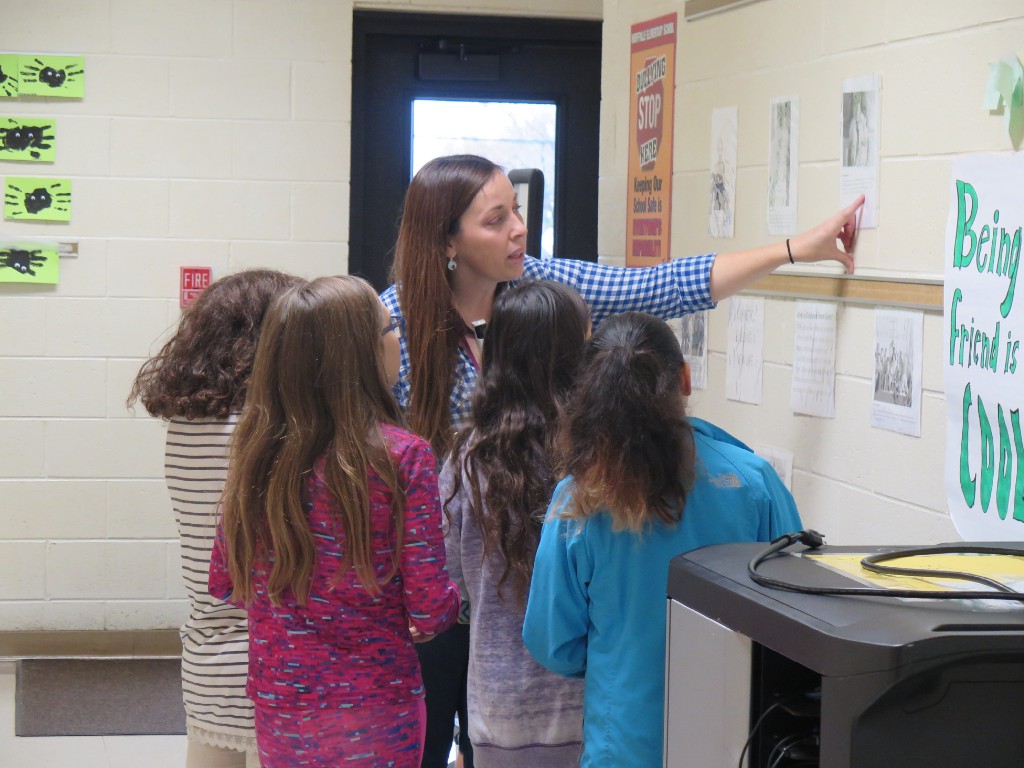
The classroom museum provided an information and interactive lesson for students

Hurffville Elementary School fifth-graders in Jacki Tiger-Williams’ and Matt Murray’s class had so many lingering questions on the Holocaust at the culmination of a unit of study on the period, when more than six million European Jews were murdered by the Nazis, that the teachers responded with a classroom museum full of answers. The activity followed the students’ completion of the novel “Number the Stars,” which was set in 1943 Denmark and personalizes the story of a brave 10-year-old Danish girl who helps her family smuggle her Jewish friends to safety in Sweden.
“We thought the Holocaust Museum for Children would be a good way to reinforce with our students the enormity of the crisis and what happened to the Jewish people when the war ended,” Tiger-Williams said. “People freed from concentration camps continued to suffer with health and emotional issues and often returned to their former lives to find no homes, no places of worship and no families there. We wanted this museum to present the gravity of the situation in an age-appropriate way and to help our kids develop empathy, since they are the ones will who prevent it from happening again.”

The students moved through five exhibits — three in the classroom and two in the adjacent hallway — “Life in Hiding,” “Crisis Management,” “Building a New Life,” “Trying to Move Forward” and “Learning from History.” To simulate an actual museum experience, each exhibit contained photographs and mini informational texts. Students also could use a QR code on iPads to access a first-person video account on the topic from actual Holocaust survivors.
“Too much time has passed, so actual Holocaust survivors cannot visit schools anymore,” Tiger-Williams told her class. “This museum gives you an opportunity to hear their stories in their own words through the videos.”

The exhibits allowed Tiger-Williams and Murray to present astonishing facts about the Holocaust without exposing the students to overly graphic images of the atrocity. Included in the exhibit was one memorable fact: “If we held a moment of silence for every victim of the Holocaust, we would be silent for eleven and a half years.” They even had the texts on the topic “Life in Hiding” hidden in small places, including under the teacher’s desk, so students actually could experience the cramped spaces where many Jews were forced to hide in to save their lives.
“Many of our students believed that once the war ended and the Jewish people were liberated, that their lives returned to normal,” Tiger-Wliiams said. “This museum helped them to see that Holocaust survivors faced many physical and emotional challenges, some of which existed for decades and even generations. We provided them with a list of reflection questions so they could give real thought to the information that they encountered through the exhibits.”









